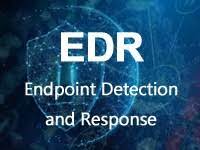Hey there, let’s dive into the fast-paced world of cybersecurity! When we talk about cybersecurity, two key measurements always come up: Mean Time to Detect (MTTD) and Mean Time to Respond (MTTR). These metrics are crucial in assessing how effective security operations are within an organization. In this article, we’ll explore the significance of MTTD and MTTR, and how innovative solutions like Intezer are enhancing these metrics.
Understanding MTTD and MTTR
What is MTTD in Cyber Security?
Mean Time to Detect (MTTD) refers to the average time it takes for an organization to detect a security breach or threat.
What is MTTR in Cyber Security?
Mean Time to Respond (MTTR) is the average time taken to respond and address the detected threat.
It’s crucial to maintain low MTTD and MTTR, as delays can lead to increased damages and compromised security. Let’s look at strategies to improve these metrics.
Enhancing MTTD: 5 Strategies for Faster Detection
To optimize MTTD, a comprehensive approach is needed:
1. Implement Advanced Threat Detection Systems
- Use XDR solutions for real-time monitoring across endpoints and networks.
- Utilize SIEM systems for data analysis.
- Deploy IDS and IPS for network security.
2. Enhance Threat Intelligence
- Implement a robust threat intelligence program.
- Subscribe to threat intelligence feeds.
3. Focus on Proactive Monitoring and Hunting
- Establish a cyber threat hunting team.
- Perform regular analyses to detect indicators of compromise.
4. Regularly Update and Patch Systems
- Maintain a strict patch management protocol.
- Automate patch deployments.
5. Enhance Security Awareness and Training
- Conduct employee training sessions.
- Simulate phishing scenarios.
7 Effective Strategies for Accelerating MTTR
Lower MTTR reduces risks. Here are ways to enhance MTTR:
1. Automate Incident Response
- Implement SOAR solutions.
- Use playbooks for automated response.
- Prioritize and focus on critical threats.
2. Predefined Response Protocols
- Develop incident response plans.
- Update protocols regularly.
3. Integration of Response Tools
- Ensure seamless integration of security tools.
- Use integrated dashboards.
4. Regular Training and Simulations
- Conduct training sessions and simulations.
- Identify areas for improvement.
- Conduct post-incident reviews.
5. Leveraging External Expertise
- Partner with cybersecurity firms.
- Establish relationships with law enforcement.
Intezer’s Impact on Optimizing MTTD and MTTR
Intezer enhances MTTD and MTTR by providing technology to support teams with incoming alerts, reducing pressure, and improving processes:
1. Reducing Dependency on External Expertise
- Comprehensive security capabilities in-house.
- Autonomous SOC platform for high-quality threat detection.
- Reduces reliance on external services.
2. Robust Security and Incident Response Automation
- Automation for alert triage process.
- Reduces manual effort.
3. Effective Prioritization of Alerts
- Prioritizing critical threats.
- Managing alert volume effectively.
4. Rapid Triage Process
- Shortened triage time.
- Minimizing exposure to threats.
5. Tools for Accelerated Deep-Dive Analysis
- Tools for in-depth analysis of complex threats.
- Providing detailed insights for quicker response actions.
Intezer’s approach significantly improves MTTD and MTTR, offering AI-powered automation and tools for swift and effective threat detection and response.




